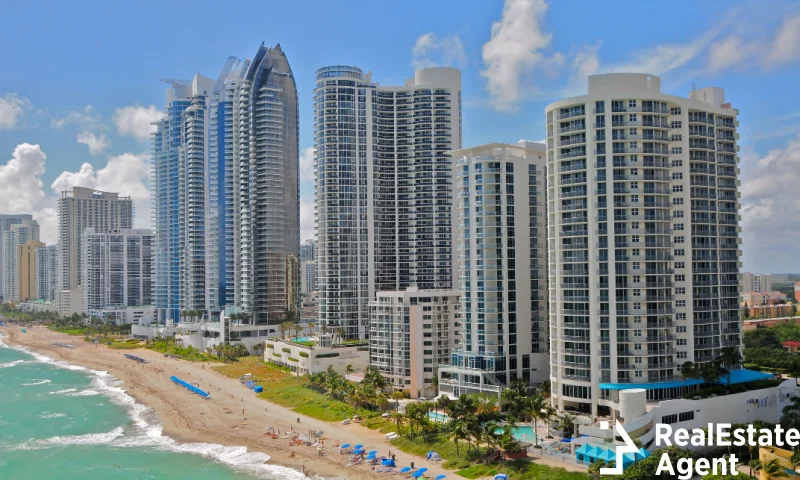If you’re looking to buy a home, you’re more than likely aware that homeownership comes with a host of financial responsibilities beyond just the mortgage payment. But if you’re buying a home in a planned community or condominium, there’s one more cost to add to the total bill: the Homeowners’ Association (HOA) fee.
HOA fees encompass a range of expenses needed for maintaining the community’s quality of life and appearance. If you want to live in a well-kept neighborhood but don’t want to mow your lawn every week during the summer, shovel snow off the sidewalks and driveways during winter days, or pick up leaves and clean your gutters in autumn, you might welcome reasonable HOA fees.
The tricky part is finding a property with reasonable HOA dues, as they vary significantly depending on your state and community. Also, HOA fees are not static and, like taxes, can go up every few years, depending on the association’s needs.
Undoubtedly, HOAs can be confusing, so to help you decide if they’re the right choice for you, we explore how the average HOA fees differ around the USA and what factors contribute to these variations.
Understanding HOA Fees
First, What is a homeowners’ association, and how does it work? An HOA is a collective organization formed by residents of a community – typically a housing development or condominium complex – whose purpose is to manage and maintain shared amenities, enforce community rules (such as pet restrictions), and upkeep the overall aesthetics of the community. In short, HOA is a resident-run organization that makes and enforces rules for the neighborhood.
Sometimes, these rules can be overly restrictive, but more often than not, they benefit the community and residents. For example, HOA fees can cover the basic upkeep of common areas, such as lawns, parks, driveways, and parking lots, and the maintenance of the exterior structures of homes and buildings, like sidings, roofs, and gutters. And if a community has a pool or a clubhouse, your HOA fees will also cover their maintenance and upkeep.
Additionally, HOAs often establish community rules and regulations that contribute to a harmonious living environment and help preserve property values in the long run. Collective decision-making also allows residents to have a say in matters that affect their community directly.
All in all, you gain access to various perks by participating in an HOA and paying the associated fees. However, there are some drawbacks to consider as well.
For one, HOA fees can be an additional financial burden, sometimes ranging from a few hundred dollars to several thousand dollars annually, depending on the community’s amenities and location.
Furthermore, the rules imposed by HOAs might not align with your personal preferences and can potentially limit your creative freedom in decorating or modifying your property.
Needless to say, it’s essential to thoroughly review the HOA’s bylaws and financials before committing to a property governed by one.
Average HOA Dues Across the USA
HOA fees can vary dramatically from region to region and community to community. A slew of factors influence these variations, such as the cost of living in a specific area, the types of amenities provided, and the overall demand for housing. This means that your HOA dues could range anywhere from $100 a month to over $1000. This said the average HOA fees in the USA are between $200 and $300 per month.
For example, states like California and New York often have higher average HOA fees due to their high property values, extensive amenities, and the need for stringent maintenance to combat wear and tear caused by larger populations.
On the other end of the spectrum, states with lower average HOA fees are typically those with more affordable housing markets, simpler amenities, and fewer maintenance requirements. States like Texas, Georgia, and North Carolina fall into this category.
In these states, you might find that HOA fees are relatively modest, making homeownership more accessible to a broader range of people. But more on HOA fees across different states a bit later.
Here’s a look at how the average HOA fee differs across various regions:
- Urban Centers
When it comes to densely populated urban areas, where space is limited but convenience and amenities are at your doorstep, HOA fees tend to be higher due to the sheer demand for shared services and facilities. These properties may also come with amenities like gyms, rooftop gardens, and concierge services.
Consequently, the average HOA fee tends to be higher in these areas, ranging from a few hundred to over a thousand dollars per month. For instance, a Chicago condo owner can expect to pay an average of $342 in HOA fees monthly.
- Suburban Communities
Suburban HOA fees typically fall in the middle range, offering a balance between amenities and affordability. In a place like suburban Denver, Colorado, you might find average monthly fees ranging from $300 to $500. These fees often cover neighborhood parks, landscaping, and sometimes shared clubhouses for community events.
- Rural Areas
In rural or less developed regions, where properties are more spread out, and amenities might be limited, HOA fees tend to be lower, often falling below $100 per month. However, in some rural areas, HOA fees can be higher.
For example, a rural community in Vermont might have average monthly fees ranging from $100 to $300. These fees may contribute to maintaining roadways, snow removal, and basic community upkeep, fostering a close-knit neighborhood feel.
- Luxury Developments
Exclusive gated communities and luxury developments often offer extensive amenities such as golf courses, private clubs, and spa facilities. As a result, HOA fees can be remarkably high, reaching a couple of thousand dollars per month. For instance, in a lavish golf course community in Florida, you might expect average monthly fees to fall between $800 and $1,500.
Factors Influencing HOA Fees:
By now, it should be clear that various factors influence the average HOA fee within a particular region. But what are those factors?
- Amenities
Communities with an array of amenities, like swimming pools, gyms, tennis courts, and playgrounds, typically have higher HOA fees. This is because these amenities require both maintenance and operational costs.
- Maintenance Needs
Just like an aging car requires more trips to the mechanic, older communities often demand more frequent upkeep. This propensity for increased maintenance can translate into higher HOA fees to cover the expenditure required for repairs and renovations.
- Location
Properties in prime locations or areas with high demand – panoramic mountain views, waterfront access, or close proximity to the city’s heartbeat – often have higher fees due to their innate desirability and the premium they add to the property’s overall value.
- Size and Density
The number of units or homes in development can also impact the fees. For example, in larger communities with hundreds of homes, the overall maintenance cost can be distributed among a larger pool of homeowners, potentially lowering the individual HOA fees.
- Services
If the HOA offers additional services, like security patrols, detailed landscaping, and/or dedicated concierge assistance, they will translate into a higher HOA fee, akin to upgrading to a premium service package.
Average HOA Dues Across Different States
To show you just how widely the average HOA fees can vary across different states, let’s delve into specific examples, shall we?
In New York, famous for its towering skyscrapers and bustling streets, homeowners can expect to pay an average HOA fee of about $680. Of course, the fees will vary depending on the property’s location, size, and amenities it offers, so some homeowners may pay about $300 per month while others may have to pay over $1000.
In California, known for its lavish lifestyle and sought-after neighborhoods, you might encounter average monthly HOA fees ranging from $400 to $700. These fees may cover amenities like pools, spas, and meticulous landscaping, ensuring the residents’ comfort and the area’s attractiveness.
Contrastingly, in a state like Tennessee, known for its affordability and southern charm, average HOA fees might range from $200 to $400 per month. While the fees are lower, they still contribute to maintaining community standards and shared spaces.
If you’re looking for affordability and a sense of community, consider exploring suburban homes for sale in Texas, as they also have more wallet-friendly HOA fees. Sure, they can vary widely from just $10 up to $600, depending on the location, home size, and community, but in El Paso, for instance, the average HOA fee is less than $100. Austin is, of course, more expensive, but not that much, even for condos. Also, it’s always possible to find a single-family home with no HOA fees.
Florida’s HOA dues can sometimes stand out due to the array of recreational facilities and upkeep required to maintain them. For example, a single-family home’s average monthly HOA fee is $250. However, some communities (typically those with a golf course included) may have HOA fees plus membership fees so the total cost may be around $1000 per month.
The Importance of Research
Conducting thorough research is paramount if you’re considering a property governed by an HOA.
You’ll want to look into the community’s financial stability, bearing in mind that an HOA with strong reserves is better equipped to handle unexpected repairs without imposing sudden fee hikes on residents. It’s also important to review the association’s rules and regulations to ensure they align with your lifestyle and preferences.
Conclusion
The average HOA fee varies significantly across the United States, reflecting the diverse nature of its housing markets and living standards. While often viewed as an unneeded additional expense, HOA dues play an essential role in maintaining the functionality and aesthetics of a community. They can also provide a sense of order and shared responsibility that contributes to residents’ overall quality of life.
When considering a property governed by an HOA, consider the property itself, the community that comes with it, and the role that HOA fees might play in shaping that community.












